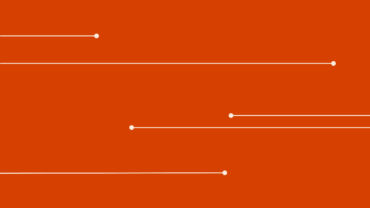Understand the differences between direct and indirect taxes, the several key types, and the importance of compliance for companies in an ever-changing industry.
Jump to ↓
| What is direct tax? |
| What is indirect tax? |
Direct tax and indirect tax. You’ve likely heard these terms but understanding what they are and how they differ is important in helping companies better understand the costs they may face and how much they may owe going forward.
The differences between direct tax and indirect tax are important to understand. Direct tax is paid directly by the taxpayer to the government and cannot be shifted, like federal income tax. In contrast, indirect tax, such as business property taxes, can be passed on or shifted to others.
But it doesn’t end there. Like branches of a tree, there are various offshoots or types of taxes that exist beneath the overarching canopies of direct and indirect taxes. We’ll discuss those in more detail shortly.
Taxes are an important source of revenue for governments and properly determining and complying with taxes is obviously critical for taxpayers to avoid fees and penalties. So, it’s important that companies understand the different taxes to help ensure compliance. Here are the main differences between direct and indirect taxes:
Direct taxes
- Levied on people and entities
- Are typically proportionate to the taxpayer’s income or assets
- Considered a progressive tax.
- Non-transferrable, the tax is borne by the taxpayer
- Examples include income tax, corporate tax, and property tax
Indirect taxes
- Levied on goods and services
- Are based on the value of the good or service
- Considered a regressive tax
- Transferrable, with consumers ultimately paying the tax. In the case of customs duties, excise taxes, and tariffs, the cost is embedded in the price of the product or service
- Examples include VAT, GST, customs duties, and tariffs
What is direct tax?
Direct tax is a tax levied on companies, as well as individuals, that cannot be passed on to another taxpayer. The taxpayer is liable for the tax payment, which is collected directly by the government.
Direct tax is progressive in nature. This means that the tax burden increases with income. In other words, an individual who makes a high income will pay a disproportionate share of the tax burden, while someone who makes a lower income will face a relatively small tax burden.
Direct tax may sound straightforward but it can get complex, so it can be beneficial to get direct tax software. For instance, companies may operate in multiple states, which makes it hard to keep track of each state’s apportioned tax.
Furthermore, time, accuracy, and efficiency are critical. Therefore, it is important to leverage robust tax provision software to speed up and automate the corporate financial close.
Direct tax can be broken down into five different buckets:
- Individual income tax
- Corporate income tax
- Capital gains tax
- Estate tax
- Property tax
Individual income tax
Individual income tax, also known as personal income tax, is a tax imposed on the salaries, wages, investments, or other forms of income that a person or household earns.
This progressive tax is levied at the federal level, as well as in the majority of states.
The U.S. levies income tax rates that range and kick in at specific income thresholds. For example, for tax year 2023, the top tax rate remained 37 percent for individual single taxpayers with incomes greater than $578,125 ($693,750 for married couples filing jointly). The lowest rate for tax year 2023 sat at 10 percent for incomes of single individuals with incomes of $11,000 or less ($22,000 for married couples filing jointly).
Corporate income tax
Incorporated businesses are taxed on their profits (minus allowable deductions), which is known as corporate income tax. The Tax Cuts and Jobs Act (TCJA) of 2017 reduced the federal corporate income tax rate from 35 percent to 21 percent.
Corporate income tax is a significant source of revenue for governments. In fact, it is the third-largest source of federal revenue, albeit smaller than individual income tax and payroll taxes.
C corporations are required to pay the corporate income tax, so it’s important to understand the tax provision and how to calculate it. However, pass-through entities — such as S corporations, sole proprietorships, LLCs, and partnerships — “pass” their income along to their owners. The owners include their allocated share of the businesses’ profits in their income tax return and pay the ordinary individual income tax.
In short, there are U.S. businesses that are not subject to the corporate income tax because they are taxed as “pass-through” entities.
Capital gains tax
Capital gains tax is a tax levied on the profit made from the sale of an asset, such as property and stocks.
Capital gains tax rates vary and that variance will depend on two factors: one’s income level and how long the asset was held. The latter refers to whether it is a short-term capital gain (held less than one year) or a long-term capital gain (held one year or more).
To further illustrate how capital gains tax works, consider the following example:
In 2018, you purchased 300 shares of “Company X” stock for $30,000. Three years later, in 2021, you sold those shares for $50,000. The long-term capital gain is $20,000 (which is subject to federal capital gains taxes and possibly state taxes as well, depending on where you live).
Estate tax
Estate tax is a tax levied on the net value of a person’s taxable estate (after any exclusions or credits) at the time of their death. The estate pays the tax before the assets are distributed to the heirs.
While there is both a federal estate tax and state estate tax, only 12 states and the District of Columbia levy an estate tax as of 2022.
Property tax
Property tax is a tax imposed on both commercial and residential “real property” like buildings and land. It is also levied on tangible personal property such as inventories, business equipment, and vehicles.
Property taxes, which vary significantly among states and localities, are a critical source of revenue for state and local governments as they help fund roads, schools, police, and other services.

ONESOURCE Indirect Tax
Maximize the impact of digital transformation with integrated tax technology.
Learn more ↗What is indirect tax?
Unlike direct tax, indirect tax is a tax that can be passed on to another entity or individual. Indirect taxes are levied on goods and services. The supplier or manufacturer passes on the tax to the consumer, who is the one ultimately paying the tax. The supplier or manufacturer collects the tax and then remits it to the government.
Indirect tax is regressive. This means the tax is applied uniformly irrespective of the income level of individuals. As a result, consumers with higher incomes will be paying a relatively small share of the tax, while low-income consumers will shoulder a disproportionate share.
Navigating the nuances of indirect tax can be challenging since there are always changes to indirect tax. Regardless of a company’s location or industry, leveraging indirect tax compliance, and also determination, software solutions that keep pace with the latest changes and complexities is critical.
There are four key types of indirect tax:
- Sales tax
- Excise tax
- Value-added tax (VAT)
- Gross receipts tax
Sales tax
Sales tax is a consumption tax levied on the sale of goods and services. Once the tax is added to the sales price of a good or service, it is then charged by the retailer to the end consumer. The retailer then remits that collected tax to the government. Tax jurisdictions only receive tax revenue when a sale is made to the end consumer.
Sales tax varies by state and even local governments, which can quickly make sales tax confusing and difficult for companies to properly navigate.
Excise tax
Excise taxes, which are levied at federal, state, and local levels, are imposed on specific goods, like alcohol, tobacco, and fuel.
Companies often pay the excise tax and then pass the cost of the excise tax onto the consumer. Sometimes referred to as a “hidden tax,” excise taxes are typically not itemized on consumer receipts so these taxes are less visible to the consumer compared with clearly visible sales taxes and can be quite complicated to calculate.
Value-added tax
A value-added tax, also referred to as a VAT tax, is a tax on the value added at each stage of the supply chain in the production of goods and services.
How it works: Each business along the production chain pays a VAT on the value of the produced good or service at that stage. The business in each earlier stage of the production chain is then reimbursed for the VAT by the subsequent business in the chain. The end consumer is the one who ultimately pays the VAT tax.
For example, if a product costs $50 and there is a 10% VAT, the consumer pays $55 to the retailer. The retailer keeps $50 and remits $5 to the government.
Gross receipts tax
Gross receipts tax, which is a tax on sales, is imposed on businesses and applies to business-to-business transactions. It is a tax businesses are required to pay on their gross receipts (i.e., gross sales, without deductions).
While gross receipts tax is imposed on the business, the cost of the gross receipts tax is often passed on to the consumer.
There are currently seven states that levy statewide gross receipts taxes: Delaware, Nevada, Ohio, Oregon, Tennessee, Texas, and Washington. The District of Columbia also levies a gross receipts tax on some industries. With the exception of Oregon and Ohio, each of these states uses different tax rates for different industries.
There’s no doubt that navigating the nuances and complexities of both direct tax and indirect tax is no small feat. Turn to a solutions provider like Thomson Reuters who can help you ensure compliance in today’s ever-changing business environment.












